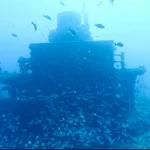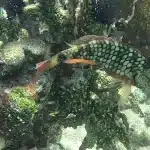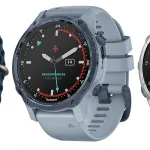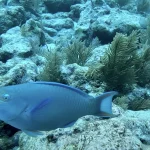Experiencing the Christ of the Abyss: An Essential Guide
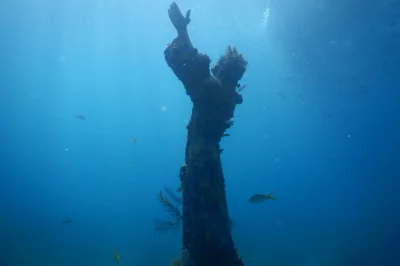
Table of Contents
- Experiencing the Christ of the Abyss: An Essential Guide
- The Fascinating History Behind the Christ of the Abyss Statue
- Avoiding Common Mistakes When Diving in Key Largo
- Why Christ of the Abyss Stands Out in Global Dive Sites
- Safety Precautions for Diving the Christ of the Abyss
- The Future of Diving at Historic Underwater Sites
- Marine Life Encounters Near the Christ of the Abyss
- Planning Your Perfect Diving Trip to Key Largo
Introduction
Dive into the captivating world of the Christ of the Abyss, an intriguing underwater statue that enchants divers and snorkelers alike in Key Largo. Discover its history, the best ways to experience it, and essential tips for a memorable diving adventure.
Experiencing the Christ of the Abyss: An Essential Guide
The Fascinating History Behind the Christ of the Abyss Statue
The Christ of the Abyss statue, officially named Il Cristo degli Abissi, is a remarkable underwater memorial with roots that trace back to 1954. The original statue, designed by Italian sculptor Guido Galletti, stands in the serene waters off San Fruttuoso, Italy, representing peace and honouring those who explore the deep. This statue gained notoriety after suffering damage when an anchor accidentally severed its hand, becoming a symbol of resilience after its restoration in 2004.
In contrast, the statue located in Key Largo, Florida, is the third cast commissioned in 1961 by Egidio Cressi, an Italian dive equipment manufacturer. It comes from the same mould as the Italian original but carries its own unique story. After a journey that included time stored in Chicago and a final stop in Orlando, this statue was submerged in John Pennekamp Coral Reef State Park in 1965, just before surviving Hurricane Betsy—a tale that has intertwined the statue’s identity with themes of divine protection.
While a second cast of the Christ of the Abyss was placed in Grenada in 1961 to commemorate survivors of the tragic M.V. Bianca C shipwreck, the Key Largo version has grown particularly beloved among scuba enthusiasts. It acts not only as a spiritual beacon but also as a thriving marine habitat, lying about 25 feet underwater, making it an accessible dive site for beginners and seasoned divers alike.
The story of the Christ of the Abyss statues reflects deeper connections between nations, as they symbolise international camaraderie and the shared human commitment to peace and conservation of our waters.
The Fascinating History Behind the Christ of the Abyss Statue
Common Mistakes When Diving at Christ of the Abyss
Diving at the iconic Christ of the Abyss statue offers a memorable experience, but many divers can make critical mistakes that detract from their dive. Understanding these pitfalls can enhance safety and enjoyment.
Ignoring Fire Coral Warnings
Divers often touch the statue, despite clear warnings about the presence of fire coral on the surface. Touching this coral can lead to painful burns and can harm the environment. The hands of the statue may seem safe from frequent contact, but touching is strongly discouraged.
Overlooking Adjacent Reef Exploration
Many divers focus solely on the statue, neglecting the vibrant coral reefs and diverse marine life nearby. This area is rich in biodiversity, and long stays at the statue often lead to missed opportunities to explore more dynamic ecosystems surrounding the statue.
Misjudging Water Depth
The statue is located in about 25 feet of water, which might lead some divers to disregard its shallow nature. Failing to manage buoyancy properly can result in accidental contact with the statue or nearby reefs. Snorkelers frequently visit the site, so divers must pay attention to their descent speeds and spatial awareness to avoid collisions.
Undervaluing Site Conditions
Some divers underestimate the importance of being aware of site conditions simply because the diving depth appears trivial. Even though currents are generally milder at the statue, nearby locations can exhibit stronger currents, demanding all divers maintain awareness and adhere to safety protocols.
Overcrowding Mismanagement
The popularity of the site can lead to congestion, where divers may rush or neglect buddy checks due to large groups. This mismanagement can compromise safety and reduce the enjoyment of the dive.
Environmental Disrespect
Touching marine life, improper anchoring, or littering are significant issues at this site. Although there are strict guidelines in place to protect the statue and surrounding reef, divers may overlook these essential rules, impacting the underwater ecosystem.
Best Practices: To enhance your experience while minimising mistakes, divers should maintain buoyancy control, prioritise exploration of the reef, and strictly adhere to no-touch policies when interacting with the environment.
Avoiding Common Mistakes When Diving in Key Largo
Cultural and Memorial Symbolism
The Christ of the Abyss distinguishes itself among global dive sites through its symbolic significance. The statue functions as both a religious icon and a memorial for divers lost at sea. Created by Italian sculptor Guido Galletti, it was originally placed in the Mediterranean near Genoa as a tribute to deceased divers and a symbol of peace. The installation of replicas in Florida, particularly at Key Largo’s John Pennekamp Coral Reef State Park, and in Venezuela amplifies its role as a universal emblem of remembrance and faith.
Accessibility and Underwater Environment
The Florida iteration of the statue stands 8.5 feet tall, situated at 25 feet below sea level, making it accessible to both snorkelers and scuba divers. Its location within the warm, crystal-clear waters of the Florida Keys offers exceptional visibility, allowing sunlight to create an almost ethereal glow around the bronze figure. The surrounding coral reefs teem with diverse marine life, enhancing its appeal as an ecological and artistic destination, and providing divers with an immersive experience in both art and nature.
Global Replicas and Icon Status
The Christ of the Abyss has been replicated in Italy, Florida, and Venezuela, solidifying its status as a global underwater landmark. Each replica attracts visitors seeking both spiritual reflection and technical diving experiences, making it one of the most photographed underwater sculptures. The combination of human legacy, environmental immersion, and international presence elevates Christ of the Abyss from a typical dive site into a cultural touchstone of underwater exploration.
Why Christ of the Abyss Stands Out in Global Dive Sites
To safely dive the Christ of the Abyss in Key Largo, follow these essential precautions:
Essential Safety Measures
- Check Weather and Sea Conditions
- Review forecasts for strong winds or rough seas, which can complicate the dive.
- Postpone your dive if conditions are unsafe.
- Inspect Dive Gear
- Ensure that all gear—masks, fins, BCDs, regulators, and dive computers—are in proper working order.
- Regularly service equipment, especially if it is ageing.
- Adhere to Dive Plans
- Stay within certification limits and adhere to predetermined dive profiles.
- Avoid exceeding depth or air supply limits.
- Use the Buddy System
- Always dive with a trained partner to monitor each other and respond to emergencies.
- Maintain visual contact and communicate effectively using hand signals.
Environmental and Skill-Based Considerations
- Respect Protected Areas
- The site is part of the Florida Keys National Marine Sanctuary. Avoid touching coral, marine life, or the statue itself.
- Never remove any artefacts or organisms from the site.
- Skill-Level Preparation
- Beginners: Opt for guided tours with certified instructors to learn equipment handling and navigation.
- Experienced divers: Focus on advanced techniques like buoyancy control and current management.
Health and Emergency Readiness
- Pre-Dive Health Screening
- Ensure physical fitness, particularly after prolonged breaks from diving.
- Check for any conditions that could heighten the risk of decompression sickness.
- Emergency Protocols
- Carry a dive light, safety sausage, and first aid kit.
- Familiarise yourself with local regulations regarding dive permits and emergency contacts.
Safety Precautions for Diving the Christ of the Abyss
Emerging Diving Technologies and Marine Conservation
Advancements in diving technology are poised to significantly impact marine conservation efforts, especially in areas like Key Largo, known for its vibrant underwater ecosystems. These innovations enable divers to explore and protect underwater environments without causing harm.
Advanced Monitoring Tools
Remotely operated vehicles (ROVs) and autonomous underwater vehicles (AUVs) are revolutionising marine conservation by enabling non-invasive monitoring of ecosystems. These devices are equipped with sensors, cameras, and AI, allowing them to track coral health, fish populations, and environmental changes in protected areas like the Florida Keys National Marine Sanctuary near Key Largo without disturbing marine life. Utilising ROVs and AUVs can lead to more comprehensive data collection while minimising human impact on these sensitive habitats.
Dive Computers and Environmental Sensors
Next-generation dive computers integrate real-time environmental monitoring, allowing divers to collect vital data on water temperature, pH levels, and pollution. This information supports conservation efforts by identifying threats such as coral bleaching or the presence of invasive species, thereby protecting Key Largo’s reefs. Enhanced sensors can transmit data live to conservationists for immediate analysis, facilitating responsive measures.
Enhanced Diving Capabilities
- Mixed-gas systems and liquid breathing technologies could enable deeper, safer dives for research and clean-up operations near Key Largo’s reefs, enhancing diver safety and effectiveness.
- Lighter, high-performance fins made from innovative materials improve diver efficiency, reducing physical strain during conservation missions such as marine debris removal.
AI-Driven Predictive Analytics
AI models analyse environmental data and diver health metrics to forecast risks like ocean warming or habitat degradation. This proactive approach aids in developing targeted conservation strategies for vulnerable ecosystems in the Florida Keys, allowing for quicker responses to emerging threats.
Sustainable Access for Research
Key Largo’s marine parks could benefit from exoskeleton-powered diving suits and advanced buoyancy systems, enabling divers to conduct longer research sessions or restoration tasks with minimal ecological impact. These advancements align with conservation goals, offering methods for sustainable interaction with marine environments.
The Future of Diving at Historic Underwater Sites
Marine Life Encounters Near the Christ of the Abyss
The Christ of the Abyss statue in Key Largo offers abundant opportunities to observe marine life, supported by the Florida Keys’ vibrant coral reef ecosystem. Key encounters include:
- Tropical Fish
Divers and snorkelers frequently see parrotfish, angelfish, and vibrant schools of smaller tropical species darting around the bronze statue and surrounding reef. These colourful fish add a lively element to the underwater experience, enhancing the beauty of this iconic dive site. - Marine Mammals and Reptiles
Sea turtles are commonly spotted navigating the shallow waters or resting on the sandy channels near Dry Rocks reef. These gentle giants are a favourite among divers, often coming within close proximity for observation. Occasional sightings of stingrays gliding across the seafloor add to the excitement of the dive. - Predators and Crustaceans
Encounters with barracudas and rare appearances of sharks or eels contribute an exhilarating aspect to the dive. While these predators are typically elusive, they can often be seen patrolling the reefs. Additionally, the reef supports spiny lobsters hiding in crevices along the coral formations, making for interesting spotting opportunities. - Reef Diversity
The Florida Keys National Marine Sanctuary protects this area, fostering a habitat rich in biodiversity. The site’s shallow waters (around 25 feet deep) allow easy access to observe colourful corals and marine organisms typical of the region’s barrier reefs, making it a prime location for appreciating underwater life.
Marine Life Encounters Near the Christ of the Abyss
To plan a diving experience in Key Largo featuring the Christ of the Abyss statue, here are key details on packages, accommodations, and the dive site:
Diving Packages
Local operators offer guided trips to the statue, with options for divers and snorkelers:
- Sea Dwellers Dive Center: Organises trips to the Christ of the Abyss dive site, emphasising safety and guided exploration. They provide equipment rentals and instruction for all experience levels.
- Silent World Dive Center: Provides scuba and snorkelling tours for all skill levels, with experienced instructors ensuring a safe and enjoyable outing.
- Key Largo Scuba Diving: Offers a snorkelling tour for $75 per person, with three daily departures at 8:30 AM, 11:30 AM, and 2:30 PM, making it flexible for various schedules.
- Rainbow Reef Dive Center: Specialises in group trips to the statue, located at Grecian Rocks Reef in 24 feet of water, providing a famous underwater experience.
Accommodations
While the search results do not specify partner hotels directly, most dive operators recommend nearby options in Key Largo. Consider checking their websites for package deals or coordinating with local resorts. Operators like Silent World or Rainbow Reef may collaborate with area lodgings, offering discounts for divers.
Christ of the Abyss Dive Site
Location: Situated at Grecian Rocks Reef off Key Largo, Florida.
Depth: 24 feet of water, accessible to snorkelers and divers, making it an ideal spot for various skill levels.
Features:
- A 9-foot bronze statue of Christ with outstretched, open palms, symbolising blessing and protection.
- Surrounded by vibrant coral reefs and diverse marine life, offering a stunning backdrop for underwater photographs.
- Ideal for beginner-friendly experiences due to calm conditions and excellent visibility throughout the year.
For bookings, contact operators like Silent World or Key Largo Scuba Diving directly to ensure availability and plan your visit effectively.
Planning Your Perfect Diving Trip to Key Largo
Key Largo Scuba Diving Tips and Best Practices
Diving in Key Largo, including sites like the iconic Christ of the Abyss statue, requires a combination of skill, planning, and adherence to safety protocols. Below are essential guidelines drawn from veteran divers and safety experts:
Certification and Training
- Complete PADI/SSI/NAUI certification to access safe diving practices, equipment handling, and emergency procedures. Reputable operators require certification for dive trips.
- Refresh skills periodically through refresher courses to maintain proficiency in buoyancy control, navigation, and equipment use.
Dive Planning and Execution
- Plan your dive meticulously, including maximum depth, time underwater, and exit strategy. Stick to your plan to avoid risks like air supply depletion or exceeding certification limits.
- Monitor air consumption and plan ascents with a reserve, ensuring enough air for slower, safer exits.
- Check weather conditions before diving, as rough seas or poor visibility can compromise safety.
Equipment and Safety Gear
- Inspect gear pre-dive, ensuring proper function of masks, regulators, BCDs, and dive computers. Familiarise yourself with equipment maintenance.
- Use dive lights for low-visibility environments, such as night dives or near large underwater structures like the Christ of the Abyss.
Buoyancy and Environmental Awareness
- Master neutral buoyancy to avoid touching reefs or submerged objects, which protects both the ecosystem and prevents injuries. This is critical near fragile environments or artefacts.
- Respect marine life by maintaining distance and avoiding contact. Disturbing creatures or habitats can lead to emergencies.
Safety Protocols and Emergencies
- Buddy system: Always dive with a partner to ensure mutual assistance during emergencies.
- Safety stops: Conduct a 3- to 5-minute stop at 15–20 feet to reduce decompression risks.
- Emergency signalling: Carry a signalling device (e.g., SMB) to alert boats in case of separation or delays.
Specific Considerations for Key Largo Sites
While the search results don’t explicitly mention the Christ of the Abyss, general best practices apply:
- Depth awareness: The statue is submerged at approximately 25 feet, suitable for all certification levels. Monitor depth gauges to avoid exceeding limits.
- Environmental stewardship: Avoid touching the statue or surrounding reefs to preserve the site’s integrity.
For site-specific risks (e.g., currents, marine life interactions), consult local dive operators.
Sources
- Sea Dwellers – Christ of the Abyss Statue
- Keys History – Art: Christ of the Deep
- Key Largo Scuba Diving – Christ of the Abyss Statue Snorkeling
- Rainbow Reef – Christ of the Abyss
- Divers Alert Network – Key Largo
- Divessi – Christ of the Abyss
- Abandoned Spaces – Christ of the Abyss
- Sea-Eo – How to Visit Christ of the Abyss

